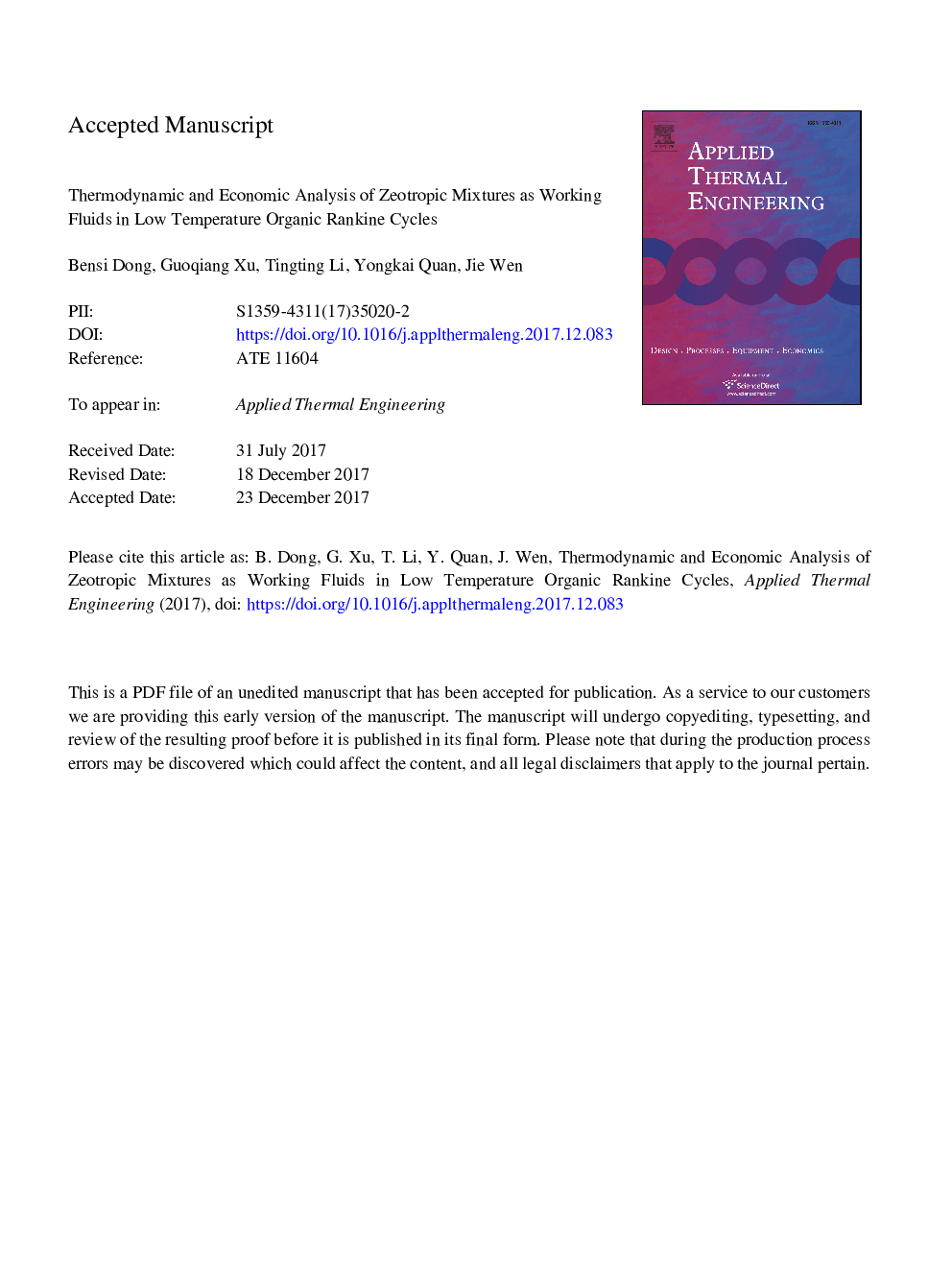| Article ID | Journal | Published Year | Pages | File Type |
|---|---|---|---|---|
| 7046084 | Applied Thermal Engineering | 2018 | 42 Pages |
Abstract
Organic Rankine cycle (ORC) is one of the most technically feasible methods to convert low-grade thermal energy into shaft power. An efficient approach to improve the thermodynamic performance is using zeotropic mixtures that enables better temperature match with the heat source and sink. In this article, a thorough assessment of thermodynamic and economic performance is conducted for the low grade ORCs using pure fluid and zeotropic mixtures. This work also examines the effects of heat source temperature and mixture mass fraction on the net power output, heat exchanger size, and cost-effective performance, and discusses the according basis for the selecting pure fluid or zeotropic mixtures. The results show that zeotropic ORC is capable of producing more net power than pure ORC, particularly for heat source with larger temperature difference. However, it needs much more heat exchanger area and therefore causes an unfavorable economic performance. Under the same heat exchanger area, pure cycle has lower pinch point temperature and higher net power output than zeotropic cycle. Therefore, the selection between pure fluid and zeotropic mixtures is also dependent on whether the power demand can be satisfied in pure ORC under the given pinch point condition.
Related Topics
Physical Sciences and Engineering
Chemical Engineering
Fluid Flow and Transfer Processes
Authors
Bensi Dong, Guoqiang Xu, Tingting Li, Yongkai Quan, Jie Wen,
